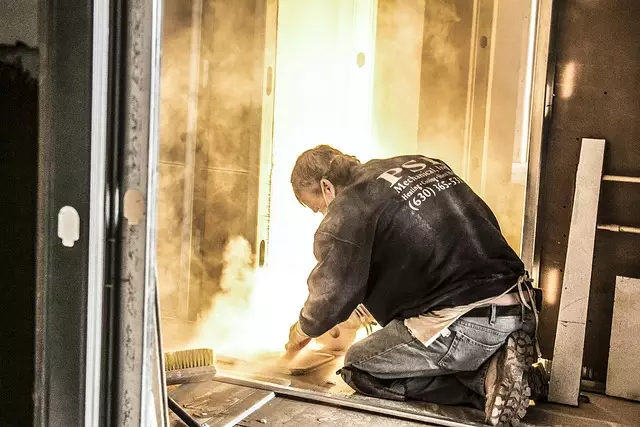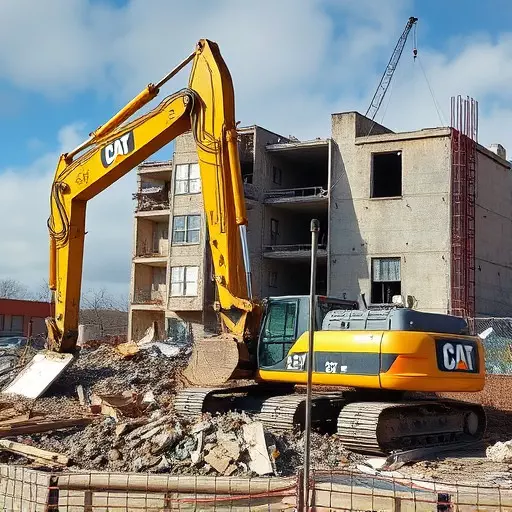Demolition and recycling services in Toledo are embracing building deconstruction as a sustainable alternative to traditional teardown methods. This meticulous process recovers valuable materials like wood, metal, concrete, and brick from existing structures, reducing waste sent to landfills and lowering the demand for new raw materials. By promoting a circular economy, these services minimize the ecological footprint of construction projects, create job opportunities, and foster a skilled local workforce dedicated to eco-friendly methods. Building deconstruction in Toledo not only promotes environmental preservation but also contributes to local economic growth while reducing the city's carbon footprint.
Demolition and recycling services in Toledo are transforming the way we handle construction sites. Understanding green demolition practices goes beyond waste reduction; it’s about minimizing environmental impact and maximizing resource recovery. This article delves into the world of demolition recycling, exploring its benefits for Toledo, the process from site to materials, and comparing building deconstruction methods with conventional approaches.
Get ready to discover how sustainable demolition can be a game-changer for both builders and the environment.
- Understanding Demolition Recycling Programs: The Basics
- Benefits of Implementing Green Demolition Practices in Toledo
- The Process: From Construction Site to Recycled Materials
- Building Deconstruction vs. Conventional Demolition: A Comparative Analysis
Understanding Demolition Recycling Programs: The Basics
Demolition and recycling programs are transforming the way we handle construction sites and the subsequent disposal of materials. In Toledo and beyond, these services have become essential components of sustainable building practices. The process starts with careful deconstruction, where buildings are taken apart rather than torn down haphazardly. This method allows for the recovery of valuable materials such as wood, metal, concrete, and brick, which can then be recycled and reused.
Building deconstruction offers numerous environmental benefits by reducing the amount of waste sent to landfills and lowering the demand for new raw materials. It’s a win-win strategy that promotes a circular economy, where resources are continually used and reused, minimizing the ecological footprint of construction projects.
Benefits of Implementing Green Demolition Practices in Toledo
Implementing green demolition practices in Toledo brings a multitude of benefits for both the environment and the local community. By integrating sustainable methods into traditional construction site demolition, the city can significantly reduce its carbon footprint. This is particularly evident in building deconstruction, where materials are carefully disassembled and sorted for recycling or reuse. Unlike conventional demolition that often leads to vast amounts of waste ending up in landfills, green practices promote a circular economy by maximizing the value of existing resources.
Additionally, these eco-friendly approaches create job opportunities in the form of specialized training and employment within demolition and recycling services toledo. By adopting building deconstruction, Toledo can foster a skilled workforce dedicated to sustainable practices. This not only contributes to environmental preservation but also supports local economic growth and promotes a more responsible and forward-thinking approach to construction and renovation projects throughout the city.
The Process: From Construction Site to Recycled Materials
The process of transforming construction sites into sources of recycled materials begins with efficient demolition and recycling services Toledo specialists. They carefully disassemble structures, separating materials like concrete, steel, wood, and insulation. This meticulous deconstruction ensures that materials are not only recovered but also prepared for reuse or repurposing.
Once on-site, specialized equipment and skilled laborers facilitate the sorting process. Each material type is directed to appropriate facilities where they undergo further processing. Concrete, for instance, might be crushed into aggregate for use in new constructions, while steel is melted down and recast into new shapes. Wood from deconstruction projects can be repurposed as fuel or transformed into composite materials, reducing the demand for virgin resources. This circular approach minimizes waste and contributes to a more sustainable building industry through building deconstruction practices.
Building Deconstruction vs. Conventional Demolition: A Comparative Analysis
In the realm of construction and renovation, two distinct approaches stand out in terms of environmental impact: Building Deconstruction and Conventional Demolition. The former involves the careful disassembly and recycling of materials from existing structures, while the latter often entails complete destruction. In today’s digital era, where sustainability is a paramount concern, many cities, including Toledo, are promoting demolition and recycling services to reduce waste and promote resource recovery.
Building deconstruction offers several advantages over conventional methods. It allows for the preservation of valuable materials like wood, metal, and concrete, which can be reused or recycled. This approach also minimizes the environmental footprint associated with new material production. In contrast, conventional demolition generates significant amounts of waste that often ends up in landfills. By choosing building deconstruction, construction sites in Toledo can contribute to a greener landscape, ensuring a more sustainable future for the city’s evolving infrastructure.


